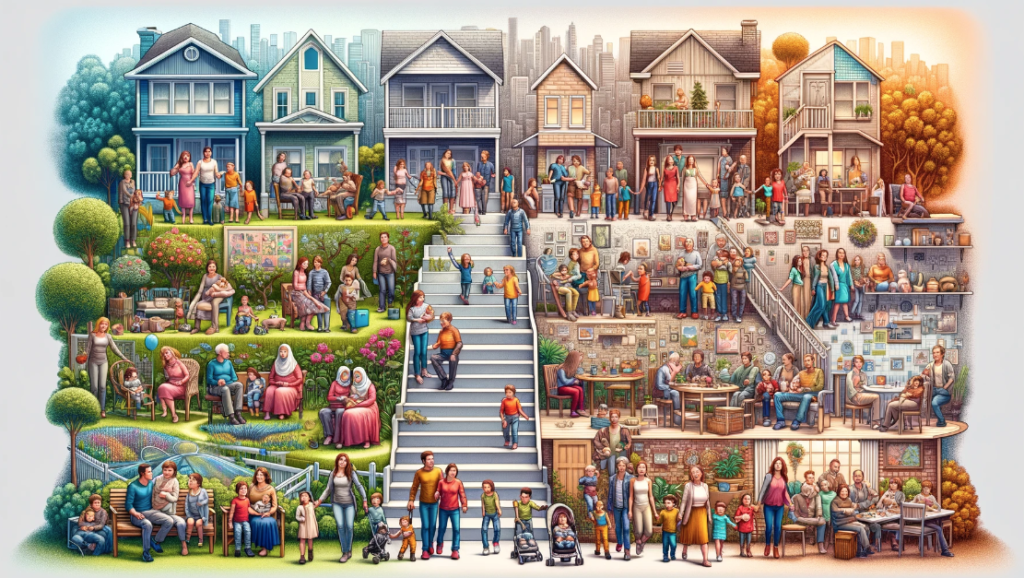Lesson 37.
The Changing Nature of Families (家族の形の変化)

▮ Explanatory Text:
The concept of family has evolved significantly over time, reflecting societal changes, cultural shifts, and advancements in technology and medicine. Traditional family structures have diversified to include single-parent families, blended families, same-sex parent families, and child-free couples, among others. These changes challenge historical norms and open discussions about the roles, responsibilities, and definitions of family in contemporary society. This topic explores the factors contributing to the changing nature of families, the impact of these changes on individuals and society, and the evolving social, legal, and cultural attitudes towards family diversity.
▮ Common Phrases:
1. Family dynamics are influenced by…
2. The rise of non-traditional family structures reflects…
3. Legal and social recognition of diverse families involves…
4. Child-rearing in the context of changing families includes…
5. Societal attitudes towards family diversity are evolving due to…
▮ Example Sentences:
1. Family dynamics are influenced by economic conditions, cultural values, and technological advancements.
2. The rise of non-traditional family structures reflects greater societal acceptance and changing personal aspirations.
3. Legal and social recognition of diverse families involves changes in laws and policies to ensure equality and protection.
4. Child-rearing in the context of changing families includes considerations of emotional support, stability, and open communication.
5. Societal attitudes towards family diversity are evolving due to increased visibility and understanding of different family models.
▮ Questions:
1. What factors have contributed to the changing nature of families in recent decades?
This question encourages learners to explore the social, economic, and technological factors that have led to changes in family structures and dynamics.
2. How do different family structures impact the development and well-being of individuals within those families?
Participants discuss the effects of various family models on the emotional, social, and financial well-being of their members.
3. What challenges do non-traditional families face, and how can society support these families?
This prompts a discussion on the obstacles encountered by diverse families and the ways in which societal support and recognition can be enhanced.
4. & 5. How have legal systems and policies adapted to the changing nature of families, and what further changes are needed?
Learners examine the legal recognition and rights of different family types, discussing areas where legal systems may need to evolve further.
Discuss the impact of cultural attitudes and norms on the acceptance and support of diverse family structures.
This question invites learners to reflect on how cultural perceptions of family affect the acceptance and integration of non-traditional families within communities.
▮ Discussion Instructions:
Choose a specific type of non-traditional family structure or a related societal issue that interests you. Discuss its characteristics, the unique challenges it may face, and the societal, legal, and cultural changes that could support its recognition and well-being. Reflect on how the evolution of family structures reflects broader societal transformations and what this means for the future of family.







